I'm using a current loop transducer as in the set up picture I provided. The transmitter is regulating the current proportional to a physical quantity and regulating the current. It is a typical 4 to 20 mA loop. We have a data acq. board which can read voltages so we read the voltage from 250 ohm resistor's ends. We use single ended input(red colored in my picture). Input amplifier is part of the data acquisition board. From R we use a BNC cable to connect to the DAQ board.
But in this link: http://www.ni.com/white-paper/7113/en/ (look at Figure 5) my setup seems to be not recommended. Isn't my setup common grounded?